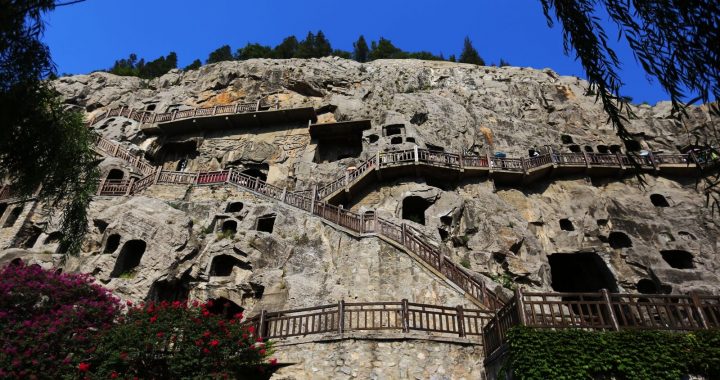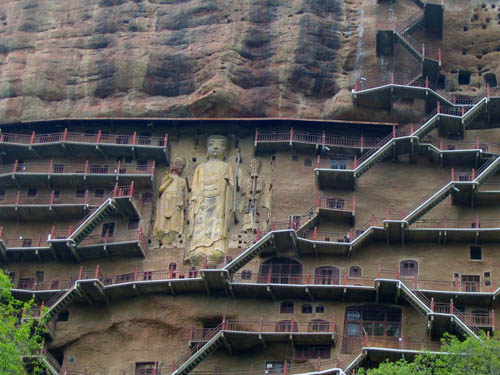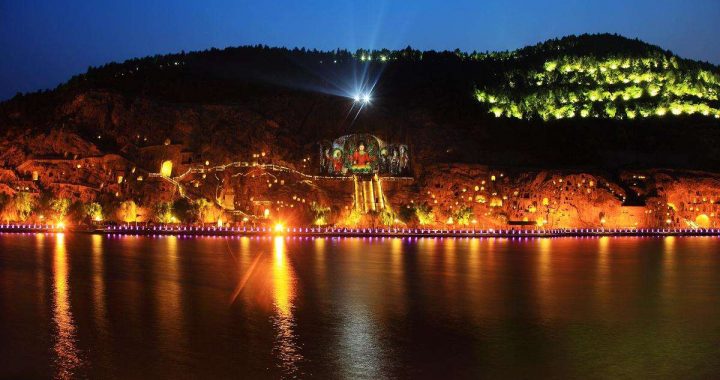Heritage:Longmen Grottoes
6 min readGrandiose caves filled with immense Buddhas decorated with intricate designs are a testament to the skill and wealth of the people who inhabited Luoyang and their devotion to Buddhism.
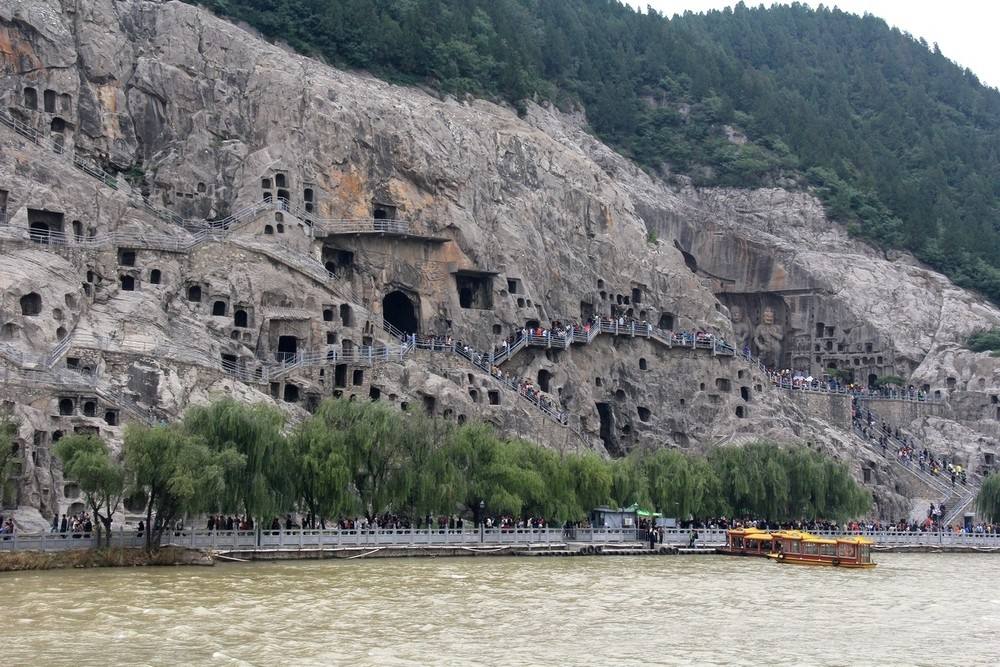
Luoyang,once the capital of 13 dynasties,does not offer many historical reminders that it’s more than 5,000 years old.Once the center of Chinese power and culture Luoyang is now best used as a base to explore the Longmen Caves(longmen shiki),7.4miles(12 km)from the city.
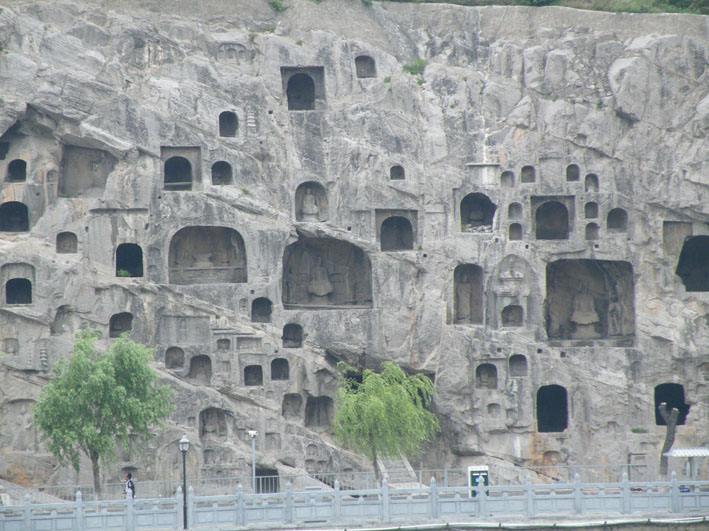
Originating in India,Buddhist cave carvings commemorate Sakyamuni,who used to teach his students in caves.Cave carvings became one of India’s great artistic heritages and spread throughout Asia along with Buddhism.The Longmen Caves have been selected as an UNESCO World Cultural Heritage Site.
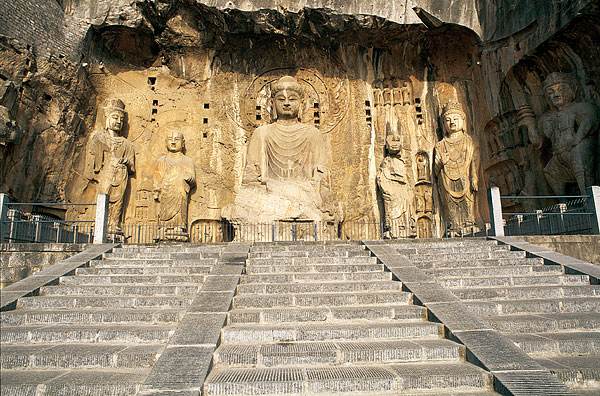
The site boasts not only the caves,but also lush mountains and ridges with springs and waterfal1s.Two mountains on the east and west side of the Yi River are covered with greenpines and cypresses,towers and pavilions dot each mountain.A hot spring near the entrance of the west mountain caves is a constant 75F(24℃)The caves got the name Longmen,which means”Dragon Gate,”because the two mountains appear as a gate with the Yi River running through it,and when the Sui dynasty emperor built his palace in Luoyang,it faced the mountain“gates.”
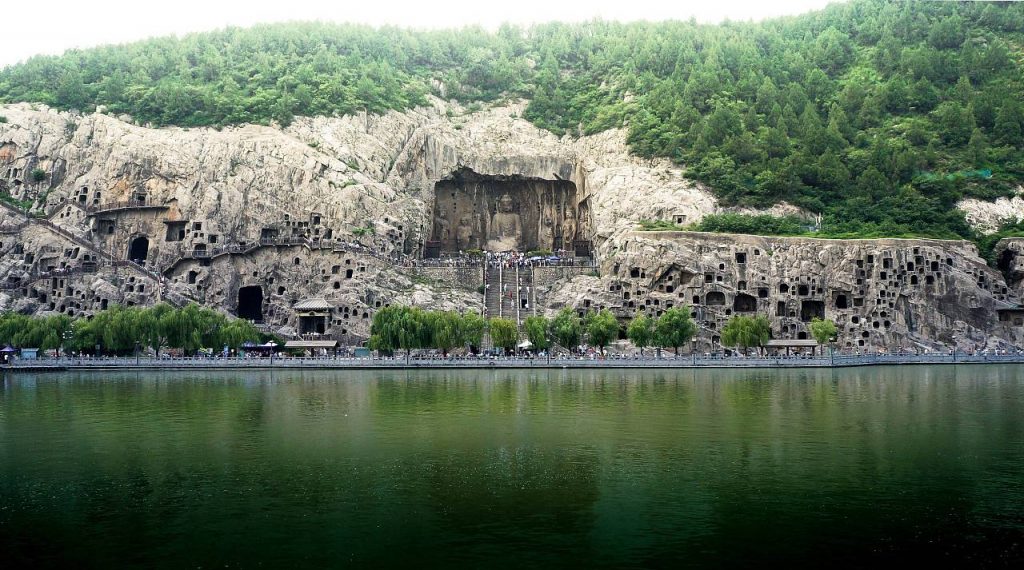
Many of the well-known caves are located on the western mountain.Work at the Longmen Caves started in AD 493 when the emperor of the Northern Wei dynasty moved his capital from Pingcheng(now Datong)to Luoyang.It continued up to the Qing dynasty with two thirds ofthe caves dating to the Song dynasty.According to the Longmen Caves Research Institute,there are 2,345 niches,over 2,840 inscribed tablets,more than 60 pagodas and some 100,000stone statues.
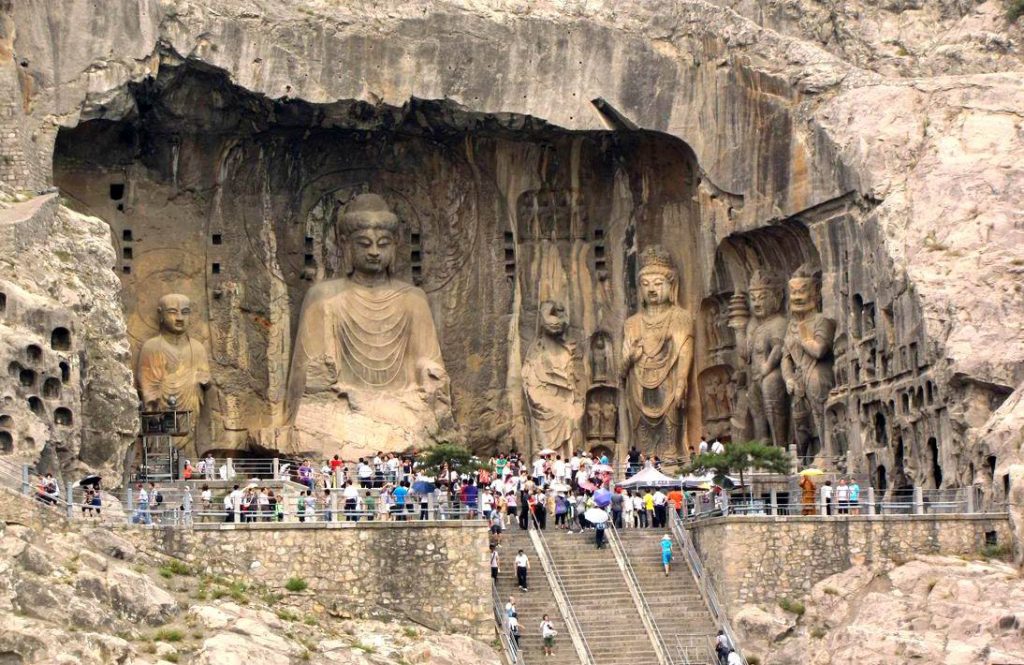
Guyang Cave(giydng dong)is one of the oldest caves in Longmen,built from AD 428 to 488;it has comprehensive images of the royal family and the nobles of the Northern Wei period.Three tiers of Buddha statues in different sizes are carved on the north and the south walls.The statues,in typical Wei fashion,feature elongated necks and boxlike heads with stylistically rich patterns.

The Three Binyang Caves(binyang san dong)were commissioned by Emperor Xuanwu of the Northern Wei to commemorate his parents,and later himself.The middle cave(binyang zhong dong)took 802,326 workers 24 years to complete.Curtains and flower strings are carved on the ceilings of the caves with lotus patterns dominating the floor area.
Inside the entrance on the two walls,there are large embossed carvings called Emperor as Donor with Attendants(huangdi lifotu)and Empress as Donor with Attendants(huanghou lifoti).The pictures vividly illustrate imperial Buddhist practices during the Northern Wei.
The Longmen Caves had two high periods of development.The devoutly Buddhist Northern Wei dynasty initiated the project as an expression of Buddhist devotion and built a large number of caves.But it was in the Tang dynasty when the real masterpieces were carved.The Tang carvings are lively and emotional,and they depict commoners,an oft-ignored subject matter.The statue of the Losana Buddha in Fengxian Temple(fengxion si )was built in the Tang dynasty by Emperor Gaozong.The statue is over 56 feet(17 m)tall with the head measuring 13 feet(4 m)and the ears almost 6.6 feet(2 m)long.Empress Wu Zetian,the first and only empress of China,donated a large portion of her cosmetics budget towards the construction of this statue and since she footed the bill for this statue,it’s believed the face of the Buddha was carved in her likeness.This statue,together with the six accompanying statues,is considered the highest development of Buddhist carving art in China.With their lively expressions,lithe bodies,and elegantly detailed clothing,they are a strong contrast to the heavy and motionless Northern Wei statues.

An ancient wall carving of the epress off to worship Buddha.on the follwing page:The largest statue at the Longmen Caves is that of Sakyauni.
Ten Thousand Buddha Cave(wanfo dong)is another Tang masterpiece.It was built in AD 680 to honor the piety of Emperor Gaozong and Empress Wu.On the north and south walls of the cave,there are more than 15,000 carved small Buddha images.The central Buddha,with a plump serene face,sits on a lotus flower throne with his legs crossed;the vajras supporting the seat have a robust and forceful form.Beyond the halo of the main Buddha are 54 lotus flower bronze offering bodhisattvas.The north and south sides are covered with 15,000 diminutive Buddha figures.Below these tiny Buddhas are twelve apsareses,either dancing gracefully or playing musical instruments.Because the cave is protected behind a metal fence,binoculars are recommended to get a clear view of the small Bird.
Royal sponsorship was the main driving force in constructing the Longmen Caves.

Although historical records and stone inscriptions reveal that the nobility,commoners and even foreign Buddhists all contributed towards the construction,only the emperor could summon the massive labor force and financial resources needed to fully realize such a massive project.The caves were built by the emperors as a tribute to their ancestors,but also out of vanity as the caves were a symbol of their own grandeur.In more practicalterms,the emperors also saw themselves as living Buddhas and the caves were a tool to impress upon the masses their divinity and gained their obedience.
Because Buddhism and its associated images came to China from India, all the statues have strong Indian influences. Over time, however, the carvings became a fusion of native Chinese and Indian styles. Statues built in the Northern Wei dynasty usually wear spacious clothes and wide belts while the bodies are slim with mild expressions that convey a strong spirit, whereas Tang dynasty statues tend to be plump with slim waists and more visually expressive features.

Most of the caves have survived the ravages of time and weather and the limestone at Longmen has proven especially durable. Sadly human nature is far more destructive than Mother Nature and many statues have been damaged in the last two centuries. Though most statues are complete,a large number had their heads lopped off, destined for a museum or a private collection. Now the niches and statues are protected by metal fence so visitors can only appreciate them from a distance.
The Longmen Caves not only showcase the development of Chinese Buddhism during the 5th and the 10th centuries, they also boast a huge collection of over 2,840 elegantly carved tablets on a variety of subjects.
While Luoyang itself isn’t a cultural hotbed, the are soe sights within the city that make it worth sticking around.
are some sights within the city that make it worth sticking around.
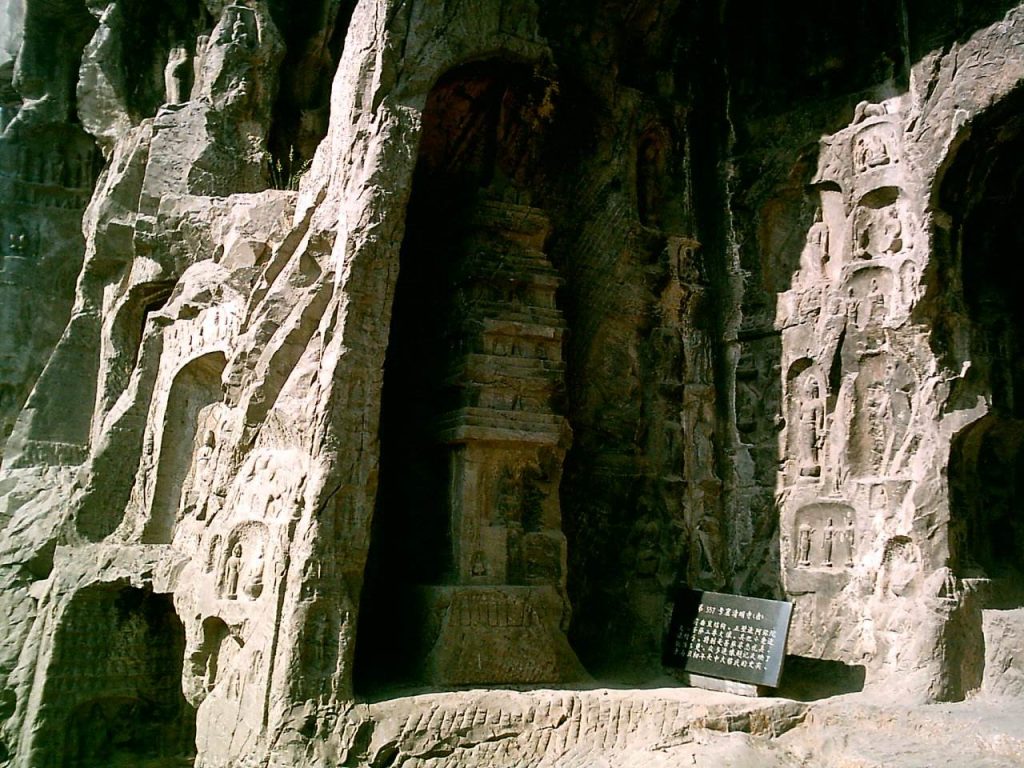
The peony is Luoyang’s city flower,which naturally means there’s an annual Peony Festival(midan hudhui).According to legend,Empress Wu of the Tang dynasty once made a bet with an official that,on her orders,flowers would bloom during the winter.
Acting upon her divine orders,all the flowers did,except for the peony.She became soenraged that she banished all peonies from Xi’an to Luoyang,which is why the city is synonymous with peonies.If you’re not in Luoyang during the Peony Festival held in from April 10 to 25,the White Horse Temple(baima si),China’s first Buddhist temple,makes for an interesting visit.Han dynasty Emperor Mingdi dreamt of a golden man flying towards the west,and taking this as a sign,he sent two envoys to the west in search ofBuddhist scriptures.His envoys met two eminent Indian monks who were invited to return with them to Luoyang.In AD 68,the emperor issued an edict to build a monastery to house the scriptures.The temple was renamed the White Horse Temple because the Buddhist scriptures were,according to legend,carried back by the monks on two white horses.
